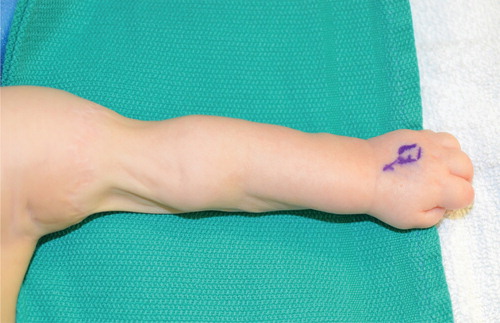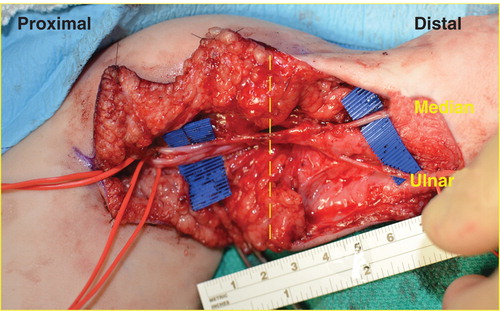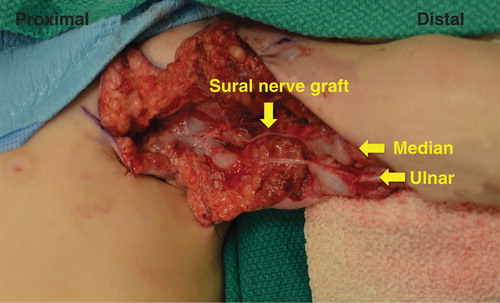Figures & data
Figure 1. The 7-month-old boy has persistent flail arm after constriction band release with Z-plasty at 3 months of age at an outside hospital. The arm had limb length discrepancy but did show evidence of tone to hand and forearm.

Figure 2. Dissection of the median and ulnar nerves revealed narrowing of the nerves in the compressed regions (yellow dashes) with preservation of caliber and vascularity distally. The brachial artery (left vessel loop) abruptly ended at the proximal end of the constricting band with no radial or ulnar artery identified.


